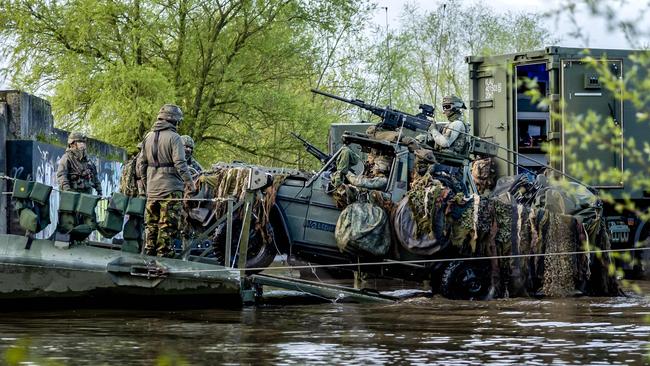NATO’s eastern flank wants boost to defence budgets
Estonia and neighbours will advocate that alliance members should be spending at least 3 per cent of GDP on defence.

A group of NATO countries bordering Russia are to begin a diplomatic push to raise the alliance’s national military spending targets, arguing that the existing budgets are no longer adequate to counter the threats confronting the West.
Estonia and other eastern flank states will advocate that alliance members should be spending at least 3 per cent of GDP on defence, given the war in Ukraine and the possibility of a Russian escalation against NATO.
The initiative, which will begin when NATO leaders meet in Washington next week, is likely to meet strong resistance from France and Germany among other states where efforts to hit the present 2 per cent target have been politically difficult.
Estonia and some neighbouring countries believe their proposal will pick up momentum, not least if Donald Trump returns to power in the US and reiterates his warnings that the Europeans cannot count on American military support unless they spend more on their own armed forces.
There will be added impetus later this year when NATO tells its individual member states what it needs them to do under the alliance’s collective defence plans, which were finalised at its summit in Vilnius, Lithuania, last northern summer.
In most cases these “minimum capability requirements” are expected to ask allies to do significantly more than at present.
In Germany, for example, NATO is thought to envisage an expansion of the armed forces from a little over 180,000 personnel to 280,000, as well as considerable investment in equipment.
Britain accepts the logic that all allies will need to spend more. Labour has promised to match Prime Minister Rishi Sunak’s spending pledge of 2.5 per cent but not his target date of 2030.
Tuuli Duneton, Estonia’s undersecretary for defence policy, said there was a case for raising the bar to 2.5 or 3 per cent of GDP across the alliance.
“We think we should already now start the discussions on putting the target for defence spending even higher,” she said.
“Taking into account that NATO military authorities have been assessing all military requirements for defence forces and capabilities, based on the regional plans, we would expect that NATO will have much higher requirements in those two categories in the coming months ... and will ask much more from all allied capitals.”
Duneton acknowledged that it would not be easy to persuade some allies to sign up for a 2.5 or 3 per cent target and the negotiations were likely to drag on into next year.
However, she said: “Ten days ago we had the NATO defence ministerial meeting and it was my sense that more and more ministers of defence agree there is a need to increase defence spending.”
Diplomats from other European countries said there was a compelling need for higher defence spending across the alliance. At least four are thought to be open to the Estonian-led initiative.
However, sources said it was too soon to discuss raising the target, given the uncertainty over who will form the next French government and challenging budget negotiations in Germany.
“It’s clear that this is the direction of travel in the long term,” one said.
“If you consider that many NATO members were spending 3 or 4 per cent on defence in the Cold War, then 2 per cent probably isn’t going to do it ... it might take a couple more external shocks for some countries to get there.”
A senior official from another NATO member said: “People across Europe are realising things have changed and we need to take the security situation more seriously.
“This is not only an issue for the eastern flank.”
This year, 23 of 32 NATO members are expected to hit the 2 per cent target. Poland spends more than 4 per cent.
THE TIMES



To join the conversation, please log in. Don't have an account? Register
Join the conversation, you are commenting as Logout